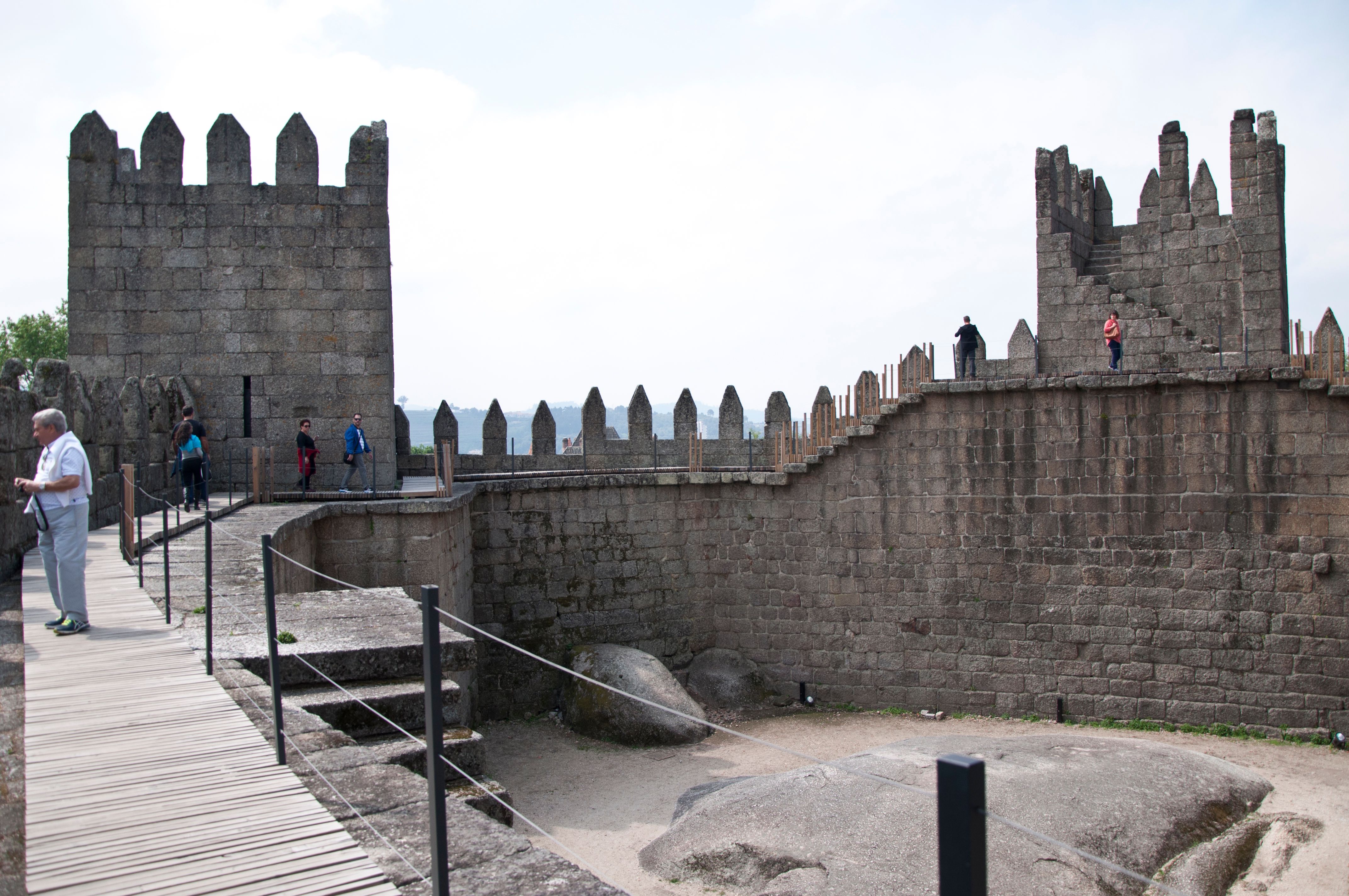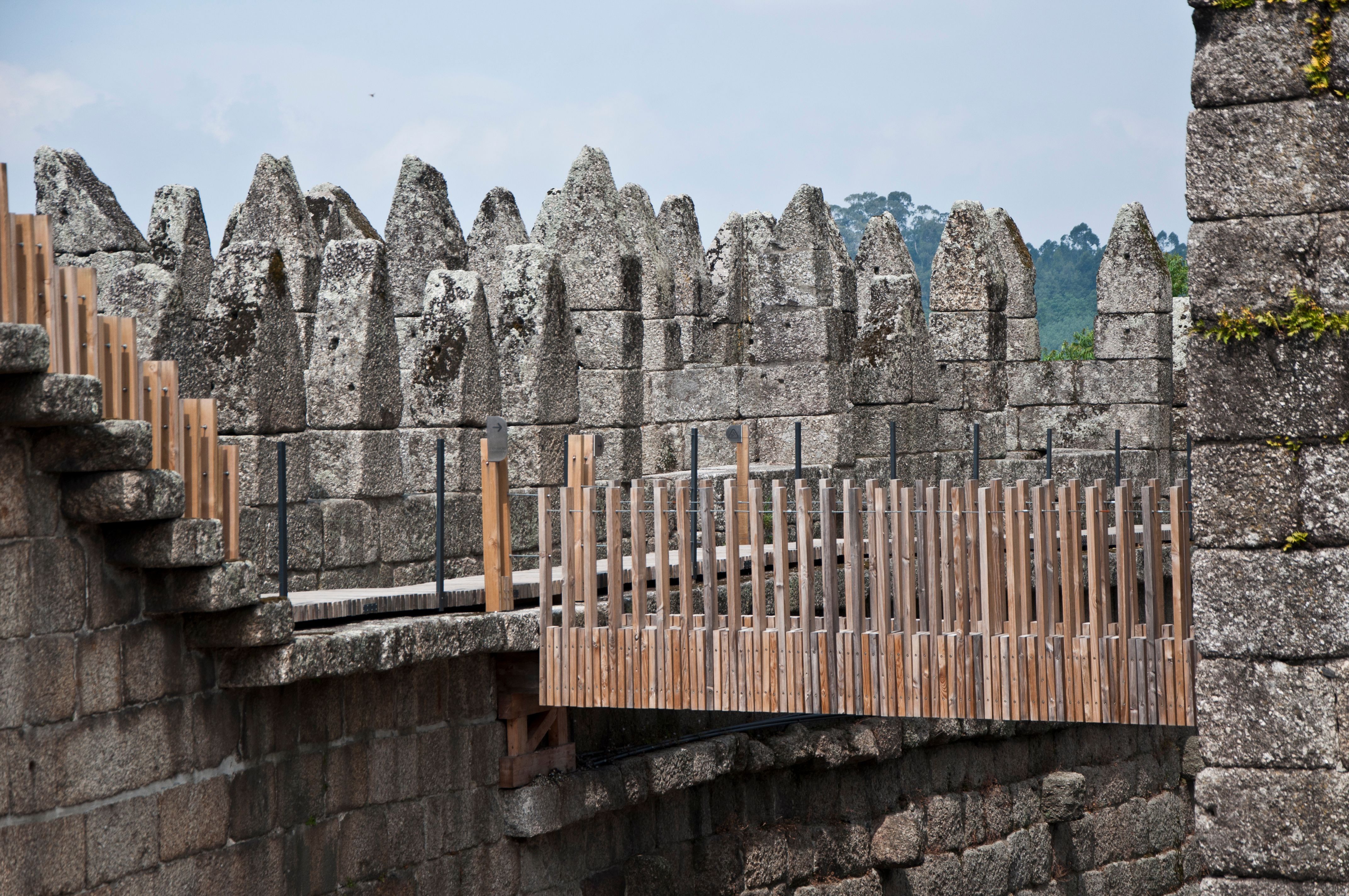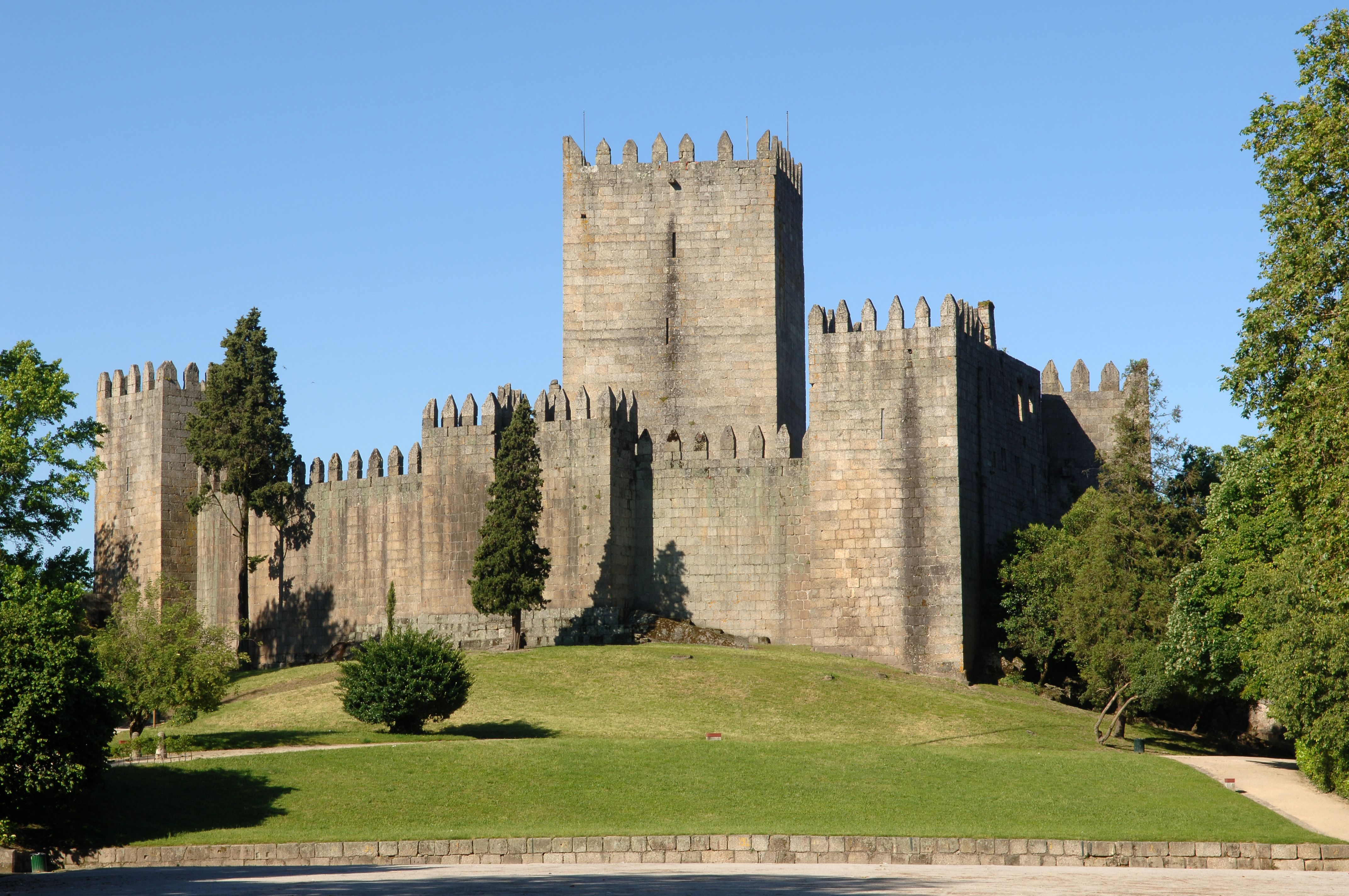Paradigm of the origins of the nation and of King D. Afonso Henriques himself, the Castle of Guimarães is one of the most representative monuments of Portugal's medieval imagery.
Its initial construction dates back to the time of Mumadona Dias who had it built in the mid-tenth century to defend the Guimarães Monastery of Saint Mary from attacks by Muslims and Normans. This primitive castle, tucked between large granite rocks, must have been erected in wood, but little traces of this remain.
At the end of the 11th century, during the government of Count D. Henrique and D. Teresa, this Castle underwent a profound renovation, of which some traces remain, mainly on the North façade facing the Field of S. Mamede. and where the base of the walls, with large stones, point to a different building phase. These traces point to a rounded floor plan as regards the castle grounds. This is the Castle that fought the forces of King Alfonso VII of León and Castile when this monarch laid siege to D. Afonso Henriques.
In the 12th century, at the time of our first monarch, it covered the current perimeter but did not have the eight towers yet. In the reign of D. Afonso III or D. Dinis, the eight turrets of its perimeter and its keep were added. The Castle of Guimarães acquired its current form in the second half of the 13th century, with the Gothic reforms. By then, the border of the kingdom was already too far away and its role was increasingly secondary.
In the fifteenth century, it still had some relevance, but at the end of 1400, it became devoid of military and strategic importance. The borders were too far apart and weapons had evolved into pyroballistics (“firearms”). From the first years of the 16th century, without a military function, it was used as a prison. The Portuguese only reconciled with the Castle of Guimarães in the 19th century when it was acknowledged as an iconic structure of the Portuguese Middle Ages. It was classified National Monument in 1881 and was granted an undeniable iconic value, much promoted by the Estado Novo, which commissioned a profound restoration, which began in 1936 and was completed in 1940.
The Castle of Guimarães is partially closed for re-qualification works of the building. However, it is still possible to visit the Armoury Square.




